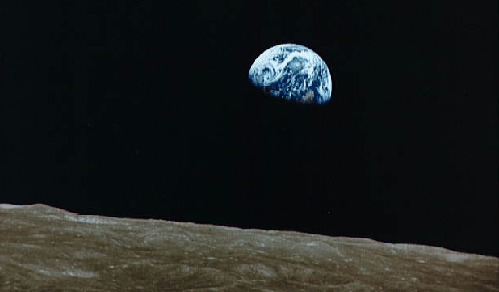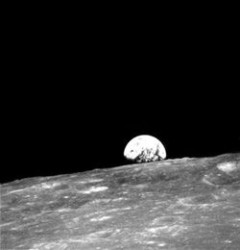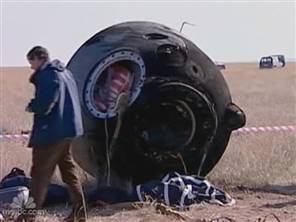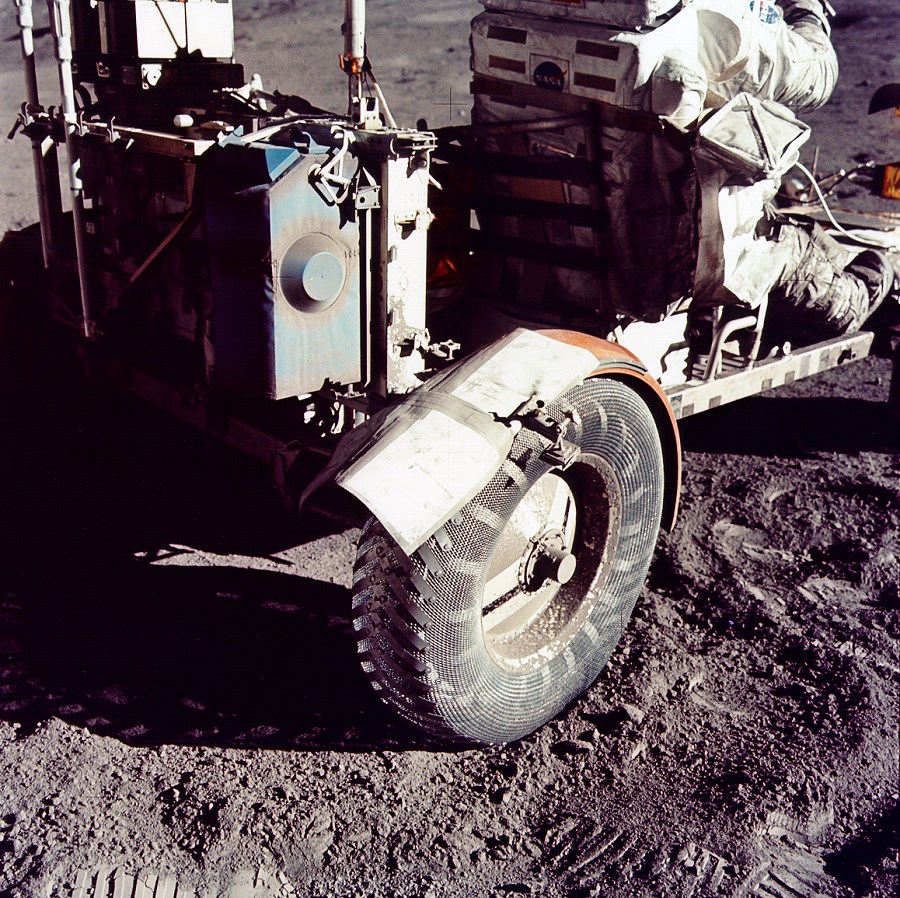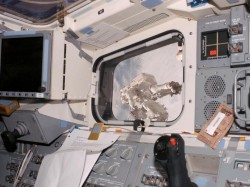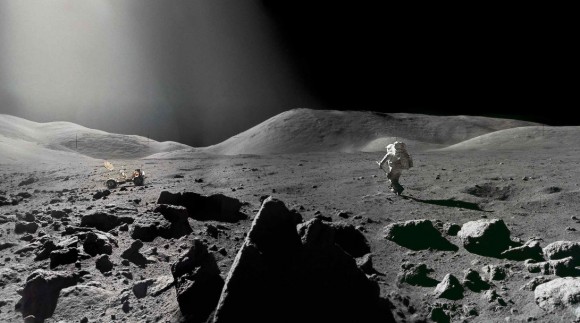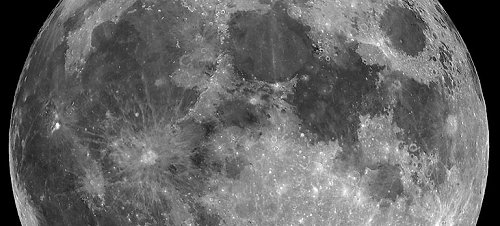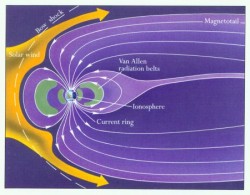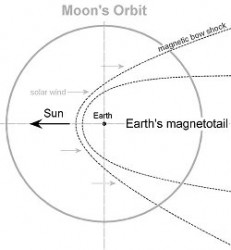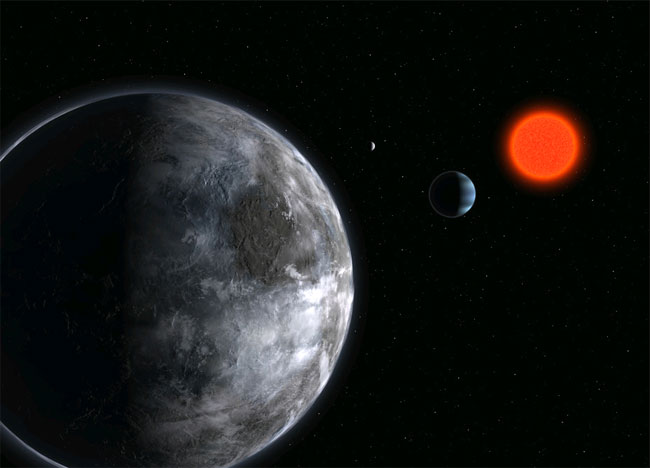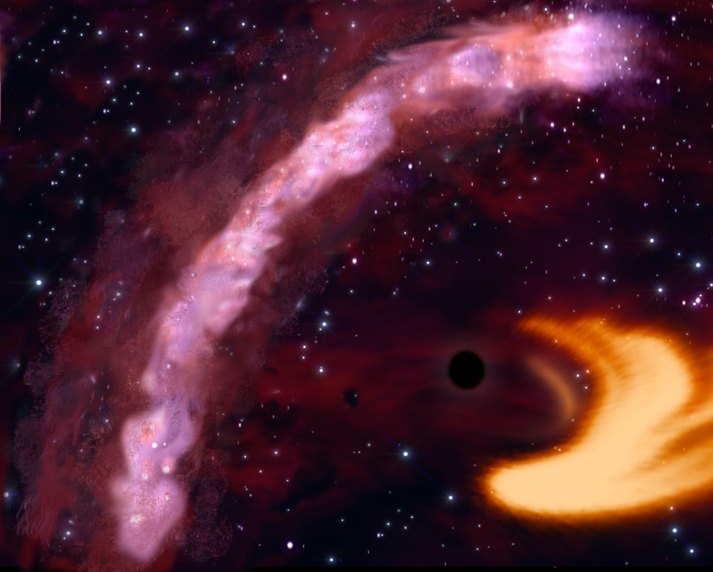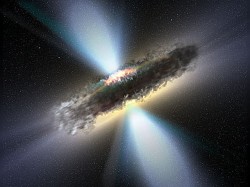Last week we gave you advice on how to choose a pair of binoculars for astronomy. This week we help you put them to use by viewing some great binocular astronomy targets. Now that the Moon is quickly leaving the early evening skies, we’re ready to begin. Just give yourself ample time to allow your eyes to dark adapt. No matter what size binoculars you have, or what your binocular astronomy experience may be, there are things I think you’ll enjoy viewing. All you’ll need to do is follow the instructions, wait for some clear skies and use the rough location binocular star charts provided. Remember, if you don’t have success the first time, try again! Now, if you’re ready, then dust off your optics and let’s step outside…
Binocular Astronomy Targets for Small Binoculars
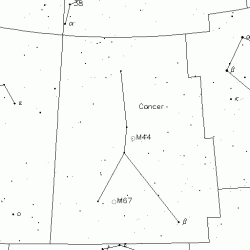 For those using binoculars in the 5X25, 10X25, 5X30 and 10X30 range, there’s many cool objects that you can see. For now, lets start in the constellation of Cancer. For most observers, the Cancer is terribly dim and difficult to spot in light polluted skies – but it’s deep space objects aren’t. If you cannot locate Cancer’s primary stars visually, begin scanning the skies equidistantly between Gemini and Leo. Our first binocular object is seen as a hazy visual patch at a dark sky location and will leap out in small binoculars.
For those using binoculars in the 5X25, 10X25, 5X30 and 10X30 range, there’s many cool objects that you can see. For now, lets start in the constellation of Cancer. For most observers, the Cancer is terribly dim and difficult to spot in light polluted skies – but it’s deep space objects aren’t. If you cannot locate Cancer’s primary stars visually, begin scanning the skies equidistantly between Gemini and Leo. Our first binocular object is seen as a hazy visual patch at a dark sky location and will leap out in small binoculars.
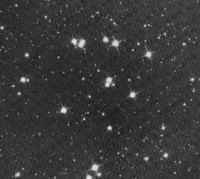 M44 – Galileo was one of the first to view this open star cluster with a visual aid. When you find it, you will know the “Beehive” because it is literally a swarm of stars! At about 577 light years distant and an estimated 730 million years old, this bright cluster averages a magnitude of 3.5 and will cover about 1/3 the field of view. While only about 20 or more stars will be readily visible to small aperature, the cluster contains more than 200 of the 350 stars in the area which have been confirmed as members.
M44 – Galileo was one of the first to view this open star cluster with a visual aid. When you find it, you will know the “Beehive” because it is literally a swarm of stars! At about 577 light years distant and an estimated 730 million years old, this bright cluster averages a magnitude of 3.5 and will cover about 1/3 the field of view. While only about 20 or more stars will be readily visible to small aperature, the cluster contains more than 200 of the 350 stars in the area which have been confirmed as members.
Now, move the binoculars slowly southeast and you’ll spy our next target:
 M67 – Discovered before 1779 by Johann Gottfried Koehler, the open cluster is one of the oldest known at 3.2 billion years. Charles Messier independently rediscovered M67, resolved it into stars, and cataloged it on April 6, 1780 and you can see why its faint signature could have been mistaken as cometary for small astronomy binoculars can’t quite resolve it either! Believe it or not, M67 is about the same age as our solar system and has about the same order of magnitude when seen from space. Enjoy its small, galaxy like appearance.
M67 – Discovered before 1779 by Johann Gottfried Koehler, the open cluster is one of the oldest known at 3.2 billion years. Charles Messier independently rediscovered M67, resolved it into stars, and cataloged it on April 6, 1780 and you can see why its faint signature could have been mistaken as cometary for small astronomy binoculars can’t quite resolve it either! Believe it or not, M67 is about the same age as our solar system and has about the same order of magnitude when seen from space. Enjoy its small, galaxy like appearance.
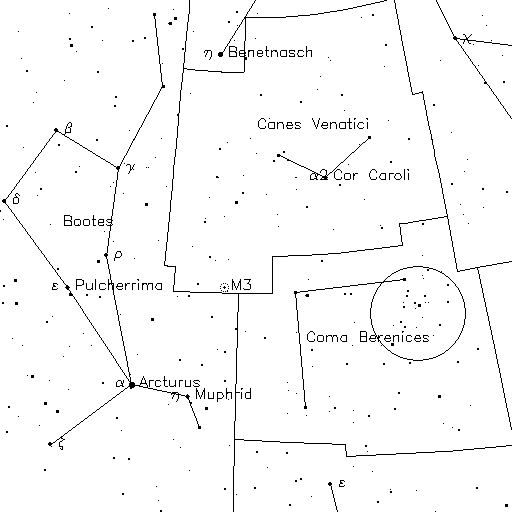 Time to head over to the Big Dipper and star our hunt for another two difficult to recognize constellations – Canes Venetici and Coma Berenices. Our two binocular targets in this area are also very bright, but not easy to find under bright skies. Using Ursa Major as your guide, follow the arc of the handle to the east for Arcturus. Got it? Good! Now look at the end of the handle again and you will see a faint star just a couple of fingerwidths away… That’s Cor Caroli. Move your binoculars between these two stars and our next target will smack you right in the eye…
Time to head over to the Big Dipper and star our hunt for another two difficult to recognize constellations – Canes Venetici and Coma Berenices. Our two binocular targets in this area are also very bright, but not easy to find under bright skies. Using Ursa Major as your guide, follow the arc of the handle to the east for Arcturus. Got it? Good! Now look at the end of the handle again and you will see a faint star just a couple of fingerwidths away… That’s Cor Caroli. Move your binoculars between these two stars and our next target will smack you right in the eye…
 M3 – Outstanding globular cluster M3 was discovered 1764 by Charles Messier and contains roughly a half million stars. It was Messier’s first original discovery and he logged it on May 3rd, 1764. If you’ve ever seen a comet, then you’ll know why this particular object closely resembles one. In smaller optics, you simply cannot resolve the stars in this 33,900 light year distant globular cluster. In small binoculars it will appear as nothing more than a small, round smudge… But what a smudge! It could be as big as 22 light years across and as old as 26 billion years.
M3 – Outstanding globular cluster M3 was discovered 1764 by Charles Messier and contains roughly a half million stars. It was Messier’s first original discovery and he logged it on May 3rd, 1764. If you’ve ever seen a comet, then you’ll know why this particular object closely resembles one. In smaller optics, you simply cannot resolve the stars in this 33,900 light year distant globular cluster. In small binoculars it will appear as nothing more than a small, round smudge… But what a smudge! It could be as big as 22 light years across and as old as 26 billion years.
Now begin moving south for another one… When the entire field of view explodes into stars? You’ve found it…
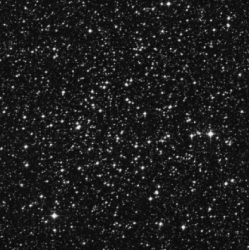 Melotte 111 – Is a real binocular beauty and belongs to a different study class of open clusters. First cataloged by Ptolemy and cataloged again by P.J. Melotte in 1915, these big, loose open clusters took a lot of study to prove the involved stars were truly associated. While apparently the Coma Berenices cluster is essentially “sitting still” in space from our perspective, it just leaves us a much longer time to enjoy this triple handful of bright stars.
Melotte 111 – Is a real binocular beauty and belongs to a different study class of open clusters. First cataloged by Ptolemy and cataloged again by P.J. Melotte in 1915, these big, loose open clusters took a lot of study to prove the involved stars were truly associated. While apparently the Coma Berenices cluster is essentially “sitting still” in space from our perspective, it just leaves us a much longer time to enjoy this triple handful of bright stars.
Binocular Astronomy Targets for Large Binoculars
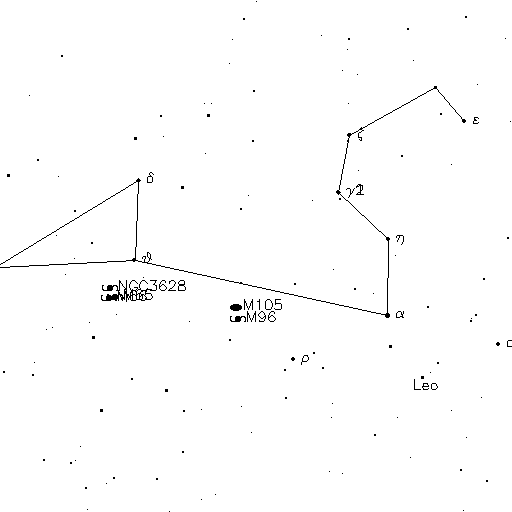 If you’re using binoculars that range into the 10X50 or larger size, then a whole new world of binocular astronomy opens up to you. While all of the above binocular targets are equally grand in your view as well, there’s even more waiting to be discovered. If you’re like I am, a challenge of my observing skills and equipment is always welcomed. That having been said, find some dark skies and head towards Leo. Just remember, as more binocular targets come into play, the more wide field star charts become crowded! Head for the area just south of the triangle that marks Leo’s hips…
If you’re using binoculars that range into the 10X50 or larger size, then a whole new world of binocular astronomy opens up to you. While all of the above binocular targets are equally grand in your view as well, there’s even more waiting to be discovered. If you’re like I am, a challenge of my observing skills and equipment is always welcomed. That having been said, find some dark skies and head towards Leo. Just remember, as more binocular targets come into play, the more wide field star charts become crowded! Head for the area just south of the triangle that marks Leo’s hips…
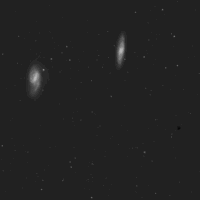 M65, M66 and NGC 3628 – Depending on the field of view size of your binoculars, this trio of galaxies will be visible in about one third to one fourth of the area you see. Don’t expect them to walk right out, but don’t sell your binoculars short, either. The M65 and M66 pair have higher surface brightness and sufficient size to be noticed as two opposing faint smudges. NGC 3623 is spot on the same magnitude, but is edge on in presentation instead of face-on. This makes it a lot harder to spot, but chances are very good your averted vision will pick it up while studying the M65/66 pair. The “Leo Trio” makes for a fine challenge!
M65, M66 and NGC 3628 – Depending on the field of view size of your binoculars, this trio of galaxies will be visible in about one third to one fourth of the area you see. Don’t expect them to walk right out, but don’t sell your binoculars short, either. The M65 and M66 pair have higher surface brightness and sufficient size to be noticed as two opposing faint smudges. NGC 3623 is spot on the same magnitude, but is edge on in presentation instead of face-on. This makes it a lot harder to spot, but chances are very good your averted vision will pick it up while studying the M65/66 pair. The “Leo Trio” makes for a fine challenge!
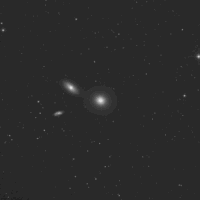 M105 – Now back to Leo’s belly and let’s find M105. Discovered by Pierre Méchain on March 24, 1781, M105 is the brightest elliptical galaxy in the Leo I or M96 group of galaxies. Again, it’s a challenge object that requires good skies and decent binocular aperture to make out this egg-shaped contrast change. It you think it’s boring, the be sure to brag to the folks at work that your binoculars are capable of seeing something 38 million light years away!
M105 – Now back to Leo’s belly and let’s find M105. Discovered by Pierre Méchain on March 24, 1781, M105 is the brightest elliptical galaxy in the Leo I or M96 group of galaxies. Again, it’s a challenge object that requires good skies and decent binocular aperture to make out this egg-shaped contrast change. It you think it’s boring, the be sure to brag to the folks at work that your binoculars are capable of seeing something 38 million light years away!
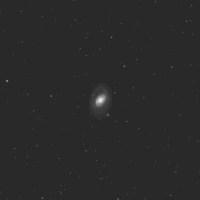 M96 – Not more than a binocular field south, is M96 – the brightest spiral in the group. Pierre Méchain discovered M96, together with M95, on March 20, 1781. While spiral structure is not something you’ll pick out as well in binoculars as a telescope, take your time when you view and you’ll notice the shape of M96 is far more round than that of M105 and that it won’t appear as condensed. If this challenge isn’t enough for you, see if you can spy M95 just to the west. It’s a magnitude fainter!
M96 – Not more than a binocular field south, is M96 – the brightest spiral in the group. Pierre Méchain discovered M96, together with M95, on March 20, 1781. While spiral structure is not something you’ll pick out as well in binoculars as a telescope, take your time when you view and you’ll notice the shape of M96 is far more round than that of M105 and that it won’t appear as condensed. If this challenge isn’t enough for you, see if you can spy M95 just to the west. It’s a magnitude fainter!
As always sky conditions play a great role as to what you can see and when. What appears to be a clear night might hold a fine layer of cloud haze that blocks you from seeing M44 unaided, or makes a galaxy harder to see when you know your binoculars are capable. Have patience, get plenty of practice and you’ll enjoy binocular astronomy just like a pro!



